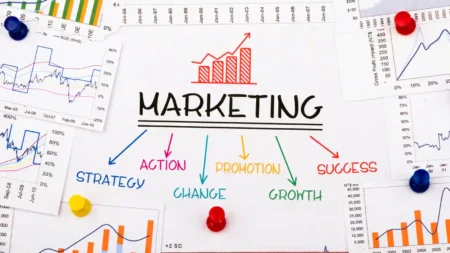Your competitors are posting regularly. Their engagement keeps rising. Their followers are multiplying. And you’re left wondering — what are they doing differently?
Here’s the truth: Instagram competitor analysis isn’t about copying someone else’s playbook. It’s about studying what works in your niche so you can do it better. By analyzing your competitors’ strategies — from the content they post to how they engage their audience — you uncover insights that help refine your own approach and find untapped opportunities.
Let’s walk through how to do it the right way.
Why Instagram Competitor Analysis Really Matters
Many brands approach competitor analysis half-heartedly — they glance at a few profiles, take screenshots, and never use the information again.
That’s a big mistake.
A thorough competitor analysis reveals patterns that your own analytics can’t. You’ll see what types of content consistently grow followers, which themes generate the most engagement, and what posting habits actually work in your industry.
The goal isn’t to mimic — it’s to identify gaps your competitors haven’t filled yet.
Finding Your True Instagram Competitors
Start with the obvious: other brands selling the same product or service as you. Those are your direct competitors.
But don’t overlook indirect competitors — accounts that target the same audience with different offerings. For example, a personal trainer and a health food brand might both be chasing the same fitness-minded audience.
To find them:
-
Use Instagram search to look up industry keywords.
-
Explore the “suggested for you” section on competitor profiles.
-
Check hashtags your target audience uses.
You can also use an Instagram follower viewer tool to see where audience overlap exists and identify which competitors attract the same followers as you.
Metrics That Actually Matter
Forget vanity numbers — a large follower count means nothing if engagement is dead.
Focus on engagement rate, which you can calculate by dividing total interactions (likes + comments) by total followers. In most industries, anything over 3% is solid.
Other key metrics to monitor:
-
Posting frequency and timing – When and how often do they post?
-
Content mix – What’s their ratio of promotional vs. educational or entertaining posts?
-
Top-performing content – Which post formats (Reels, carousels, stories) get the most traction?
Tools like UnfollowGram’s Instagram Follower Tracker make this process easier by automating performance tracking across multiple accounts.
Creating a Competitor Analysis Framework
You don’t need expensive tools to start. A simple spreadsheet works fine.
Set up columns for:
-
Competitor name
-
Posting frequency & timing
-
Average engagement rate
-
Top-performing formats
-
Caption style & tone
-
Hashtag approach
-
Key takeaways or campaigns
Track 5–7 competitors monthly — a mix of direct rivals, indirect players, and at least one top brand in your niche to benchmark against.
And remember: data is useless without interpretation. Write down what the numbers mean, not just what they are.
Dissecting Competitors’ Content Strategies
Look at the types of content they post:
-
Are they focusing on Reels, carousels, or single-image posts?
-
What topics or “content pillars” do they rotate through (education, storytelling, testimonials, etc.)?
Then analyze:
-
Captions – Are they long and narrative or short and direct?
-
Hashtags – Do they use branded or trending hashtags? How many?
-
User-generated content (UGC) – Do they feature followers’ posts, and how does engagement compare?
This reveals what styles, tones, and visuals resonate most with your shared audience.
Tracking Posting Patterns and Timing
Posting at the right time can make or break your content’s reach.
Identify when your competitors’ posts perform best — look for recurring patterns instead of one-off viral hits.
-
Do they post daily or just a few times a week?
-
What days or hours drive the most engagement?
-
Are weekends ignored in your industry? (That could be your opening.)
Understanding their posting rhythm helps you fine-tune your own schedule for maximum visibility.
Studying Audience Engagement Behavior
The comment section is where the real insights live.
Read through competitors’ comments:
-
What are followers asking?
-
What emotions or feedback appear most often?
Also, note how competitors reply. Are they personal and conversational, or formal and distant?
Check story highlights — what topics do they showcase permanently? That tells you what they value most.
Finally, look at tagged posts and mentions. Who’s talking about your competitors, and how? This helps gauge brand perception.
Turning Insights Into Strategy
Collecting data is only the first step — execution is what matters.
Compare competitors’ strengths to your own performance and identify gaps worth addressing.
-
Are their Reels outperforming your posts? Try your own spin on the format.
-
Are they consistent with captions or storytelling? Adapt their approach to match your tone.
Test one improvement at a time — for instance, change your posting schedule before overhauling your content style. Then measure the results and adjust again.
The key is to use the numbers, not just record them.
Tools for Ongoing Tracking
Manual research works at first but becomes time-consuming over time.
Dedicated Instagram competitor analysis tools automate much of the work — monitoring engagement, follower growth, and content trends across multiple profiles.
Examples include:
-
UnfollowGram – for tracking engagement and follower data.
-
Social Blade or Hootsuite Analytics – for growth insights and posting patterns.
Use tools that fit your priorities: content strategists focus on post formats, while growth marketers may prioritize audience and engagement data.
Common Mistakes to Avoid
-
Copying instead of adapting – Use inspiration, not imitation.
-
Tracking too many competitors – Focus on 5–7 for clarity.
-
Ignoring indirect competitors – They often innovate faster.
-
Doing it once and forgetting – Reassess monthly or quarterly.
-
Skipping your own benchmarks – Always compare findings to your own metrics.
Making Competitor Analysis a Habit
Treat competitor analysis as part of your content workflow, not an afterthought.
-
Schedule monthly check-ins to track shifts in trends and engagement.
-
Share insights with your team — they inform marketing, product, and customer support.
-
Document everything — screenshots and notes help you recognize long-term shifts.
Final Thoughts
Competitor analysis on Instagram isn’t about chasing popularity — it’s about understanding your market and spotting opportunities before others do.
Your competitors are leaving valuable clues with every post — from their visuals and captions to their engagement tactics. The brands that succeed are the ones that study those clues and act on them strategically.
Now that you know how to analyze effectively, use those insights to elevate your content, connect better with your audience, and grow faster than the competition.



